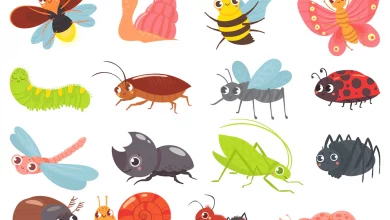Saltwater Fish Tips for Beginners

Pet fish are a very typical first pet, but saltwater fish can be quite a bit more complicated and require more expertise. Don’t let the extra challenge scare you off from owning saltwater fish, though! With the right preparation ahead of time, you can bring your saltwater tank dreams to life and do so without putting your new fish at risk.
If you’re new to caring for saltwater fish, you’ve come to the right place. You’ll find all the best beginner tips for caring for your saltwater fish and their environment.
Tips for Setting Up Your New Aquarium
Decide on the Type of Aquarium
The first step in setting up your new aquarium is to decide what type of aquarium you want: fish only, fish only with a live rock, or a reef.
A fish only aquarium is the easiest to set up, but it will require a bit more maintenance as live rock helps with cycling your aquarium. Expect to change the water more often to help assist with cycling your aquarium’s water in order to maintain a high water quality.
In an aquarium that is fish only with a live rock, you have only fish species plus a live rock to help assist with water quality and cycling. Live rock is usually only a few dollars per pound and adds interest to your tank as well as introducing beneficial bacteria to your tank.
The final type is a reef. This is probably what you think of when you think of having a saltwater aquarium. It includes fish and corals and is the most expensive type of aquarium to maintain. Corals require special water quality and lighting in order to live.
Cycle Your Aquarium
Before you even buy your first saltwater fish, it is vital that you cycle your aquarium. If you don’t complete a fishless cycle before introducing new fish, your aquarium is more likely to build up toxic materials. Even if you don’t introduce toxic material to the tank, build up of food and waste can quickly become toxic when they aren’t cycled correctly.
Doing a fishless cycle of your aquarium is best as you won’t have to worry about harming your fish or even keeping a close eye on it.
To cycle your aquarium, you have a few options: an ammonia source (liquid ammonia or some other source), fish food, established bacteria, or live rock. These are the best options for a saltwater tank. For a guide on how to cycle your future saltwater aquarium using any of the methods above, look here.
Tips for Choosing Your Fish

If you’ve never had pet fish before, then you may not realize that some species are not compatible with one another. Some species are aggressive and territorial. Other species need specific living conditions that can be harmful to another species.
Check a Species’ Compatibility
Before you buy your favorite saltwater fish, make sure to check this saltwater fish compatibility chart to see if the species you plan on having are safe to put together. If you really want to create an aquarium inspired by Finding Nemo, you’ll be able to put a clownfish and blue tang together, but you can’t add a seahorse or puffer.
Avoid the temptation to add incompatible species together. Even if you’ve always wanted a puffer and your think clownfish are just too adorable to pass up, the consequences of mixing incompatible species is not worth seeing your two favorite fish together. If you really want the two species, it’s recommended that you look into two separate tanks.
Add Territorial Fish Last
It’s perfectly acceptable to have territorial fish in your aquarium, but it’s vital that you add these species last. Even if they’re second to last, they’ll be aggressive toward whichever species came in after them. Since it’s so important to add territorial fish last, it’s equally important that you classify the fish species as territorial or friendly.
If you don’t want to go through the trouble of researching a certain species for yourself, here is a list of popular saltwater fish and whether they are territorial or friendly as well as other types of fish they can be around.
Give Yourself Time
Introducing new fish and setting up your aquarium should take about 4-6 weeks if you aren’t rushing. Don’t add all your fish in the same week as this can quickly lead to problems that have a disastrous effect on your new aquarium such as overloading your aquarium or too much ammonia building up too quickly.
Tips for Maintaining Your Aquarium

Once you’ve set up your aquarium and have added your first few fish, there are still some things you need to be aware of.
Keep an Eye on Filtration and Water Circulation
Saltwater fish are as fragile as they are beautiful. Even once you cycle your aquarium, add your live rock, and add your final fish, you still need to keep a careful eye on the filtration and water circulation.
Using a mechanical filter makes this easier, but you’ll still want to check the water regularly to ensure it’s still high quality. A powerhead or surge device can help with water circulation, reducing the risk of algae build up and low oxygen levels.
Use Purified Water
Many people simply use tap water to create their saltwater solution, but this is not recommended. It can lead to poor water quality or other issues. Instead, use purified water or buy a water purification system for your tap water before making your saltwater solution.
Very rarely will your tap water be adequate for a saltwater aquarium and investing in purified water will be worth it in the long run.
Enjoying Your Aquarium

You’ll need to put in some work before you can bring your first saltwater fish home, but taking your time is important and will ensure that your fish have a safe place to live.
Once you’ve done the work to set up your aquarium and you’ve researched potential fish for your aquarium, taking care of your fish really isn’t that hard. Aside from the regular cleaning of your tank, you’ll need to mix up a saltwater solution, but the joy of owning saltwater fish makes this well worth the work.




